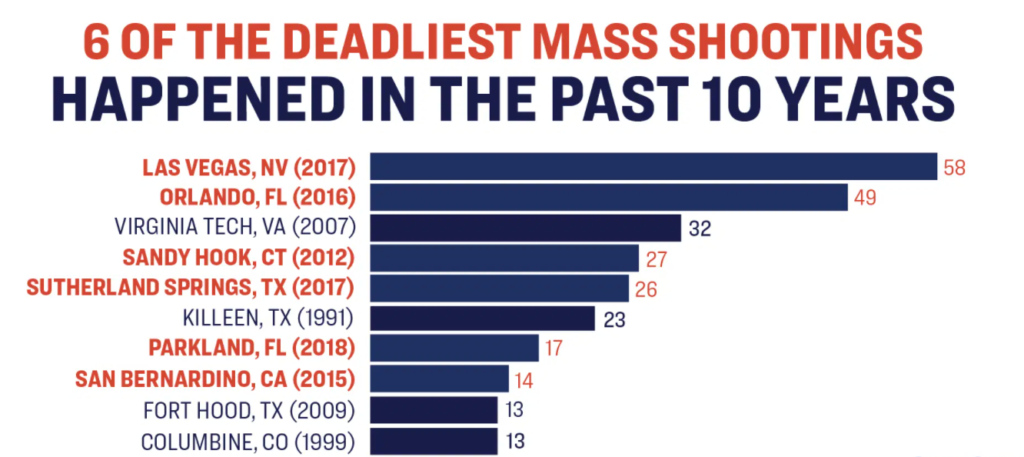Mass shootings are uncommon, but the moral panic they cause has been commonplace for decades, indicating a regular or “routinized” moral panic (Duxbury, Prizzell, and Lindsay, 2018). Murray (2017) adds to this argument as in their article they discuss that entertainment-focused news coverage of mass shootings has had unforeseen consequences. In some cases, it has served as a source of knowledge and a potential template for those who may think of being murderers to use as a basis for their motivation and planning for their own violent crimes. The fact that the media has impacted and phrased mass shootings in such a way is disheartening and ultimately harmful to countless people. Media is a platform that should be aiding in the decrease and educating, not inspiring individuals about mass shootings. Fox and DeLateur (2017) mention that the public’s impression of mass murder is increasing. This dread and anxiety are connected to the manner and scope of news media coverage, due to technological advancements.
As mentioned before, there has been a dramatic increase in mass shootings across the United States. Scholars are attempting to understand why these shootings continue to grow in number. According to Valcore and Buckler (2020), “Mass shootings, acts of terrorism, and hate crime incidents have all increased in frequency and severity in the United States over the past few years. Reported hate crimes, as tallied in the FBI’s Uniform Crime Report (2018), have steadily increased each year since 2015, including a 17% increase from 2016 to 2017.” These statistics are alarming and concerning to the upcoming generations. Columbine is seen to be the first large school shooting that occurred in 1999, in Colorado. Mass shootings, the most prevalent and frequently reported form of mass violence in the United States since the Columbine atrocity, have caused great moral concern.

There were 100 mass shootings in the U.S. recorded in a compilation of data from January 1982 to May 2018, with 833 fatalities, and 1,292 injuries, according to Lin et al. (2018). Another study focused on the implications of COVID-19 on mass shootings. Once the national emergency was declared, both public and private mass shootings looked to be on the rise, and both peaked the week of July 4th (Schildkraut and Turanovic, 2022). With the increase in mass shootings and several school shootings, legislation has been passed to address these concerns. In addition to school shootings, security measures at schools have been stepped up, including the use of metal detectors, identity cards, and zero-tolerance guidelines (Schildkraut, Elsass, and Stafford, 2015). In an ideal world, students and parents should not be worried about the possibility of a shooting occurring at a place where they are required to learn. This will lead to the next section on gun control and gun violence.